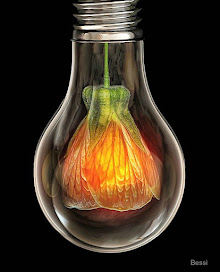 Patchouli straddles the line between love and hate. Devotees of the essential oil find its exotic aroma intoxicating and revel in the way the raw material turns the wearer into a virtual censor, leaving a trail of scent in its wake. Those with disdain for patchouli consider any encounter to be an odious intrusion. The reason for such contradictory responses goes beyond personal taste, tenacity and essential oil quality. In truth, patchouli’s history plays an equal if not greater role that has gone mostly unnoticed.
Patchouli straddles the line between love and hate. Devotees of the essential oil find its exotic aroma intoxicating and revel in the way the raw material turns the wearer into a virtual censor, leaving a trail of scent in its wake. Those with disdain for patchouli consider any encounter to be an odious intrusion. The reason for such contradictory responses goes beyond personal taste, tenacity and essential oil quality. In truth, patchouli’s history plays an equal if not greater role that has gone mostly unnoticed.In its natural setting patchouli is a verdant and beautiful leaf. Its appearance is at odds with its dark olfactive impression which leaves floral, spicy, balsamic and woody impressions. Patchouli is what is known as a fixative in perfumery. This means that it supports other fragrance notes in a perfume and harmoniously anchors them. Like wine, patchouli gets better with age; something that is not the case for most ingredients used in perfumery. As time passes, the amber-colored oil becomes sweeter and loses its sharp green and wet earthy qualities.
Despite patchouli’s ability to age gracefully some noses are not seduced by mature vintages. Molecules called terpenes are partially responsible for dry medicinal effects in patchouli that turn noses off. Terpenes have a resinous solvent-like odor that resembles turpentine. This aspect, along with poor qualities of oil that smell musty and barn-like, are what cause non-patchouli lovers to associate repulsive and dirty attributes to the essential oil. One of the primary functions of the sense of smell is to protect us from danger, so the intensity of the response is understandable as huffing turpentine is not in the interest of good health.
A few patchouli oils on the market have had some of the naturally occurring terpenes removed. This results in a “cleaner” smelling essential oil. Slatkin Persian Lime Blossom and Mimosa (sadly discontinued since Harry Slatkin signed on with retailer Bath and Body Works) utilized a “clean” patchouli from Laboratoires Monique Rémy and the effect is interesting; you cannot smell patchouli directly, but you can recognize its signature tenacity in the drydown. A recent example of “clean” patchouli's application is Tom Ford White Patchouli. The finished fragrance utilizes Givaudan’s Patchouli Orpur®, which imparts the heft associated with patchouli, but none of its sharp malodorous qualities.
 Patchouli is one of the few materials in perfumery that cannot be synthesized, a fact that hippies may or may not have known when they adopted a scent that defined the "free love" culture of the sixties. Historically, patchouli is more than an artifact of 1960’s counterculture. When patchouli was chosen as a universal scent for men and women, hippies exerted tribal power through odor. The aroma of patchouli was an olfactive tattoo that allowed members to ferret each other’s politics through scent. Fragrance advertising that skews to a young demographic often riffs on this tribal element when it comes to positioning fragrances in the marketplace. Recent ads for Calvin Klein One illustrate the point graphically and literally, using a cadre of multiracial models and an anthem that includes the words “…so many “me’s” but just one “we”…we are one.”
Patchouli is one of the few materials in perfumery that cannot be synthesized, a fact that hippies may or may not have known when they adopted a scent that defined the "free love" culture of the sixties. Historically, patchouli is more than an artifact of 1960’s counterculture. When patchouli was chosen as a universal scent for men and women, hippies exerted tribal power through odor. The aroma of patchouli was an olfactive tattoo that allowed members to ferret each other’s politics through scent. Fragrance advertising that skews to a young demographic often riffs on this tribal element when it comes to positioning fragrances in the marketplace. Recent ads for Calvin Klein One illustrate the point graphically and literally, using a cadre of multiracial models and an anthem that includes the words “…so many “me’s” but just one “we”…we are one.”Authority may not have smelled like patchouli in the 1960’s, but the well-heeled elite of 18th and 19th century Europe did. Silk traders traveling from the East packed luxurious silk shawls in patchouli leaves to keep out moths and their larvae. By the time the garments arrived on European shores they were impregnated with the aroma of patchouli. When wealthy women wore the shawls the scent of patchouli lingered on their clothes, skin and in the air. Eventually the shawls fell out of fashion and into the wardrobe of prostitutes. It was then that patchouli became associated with things carnal and forbidden. Revered and adored when emanated by the rich. Forbidden and abhorred when worn by whores. An interesting and contradictory olfactive path when one considers that patchouli’s initial use in luxury goods was that of an insect repellent.
Those that turn their noses at neat applications of patchouli may enjoy perfumes that envelop patchouli and utilize its diffusiveness to highlight other ingredients. Sarah Jessica Parker’s Lovely executes this patchouli effect brilliantly and does so in the company of what smells like a street version of Egyptian Musk and the structure of Narciso Rodriguez (rumor has it that Lovely was inspired by a concoction made by one of the make-up artists on the set of Sex and the City, a fact that is noticeably missing from Chandler Burr’s book, The Perfect Scent). Patchouli is a key ingredient in chypre, oriental, floral and gourmand fragrance categories. If it is able to skirt IFRA’s list of banned ingredients (category defining ingredients seem to be IFRA’s favorite targets), patchouli will continue to trend from "haute" to "not" and "back again".
Notes:
The Fillmore East poster is from a music blog called For the Greater Good.










